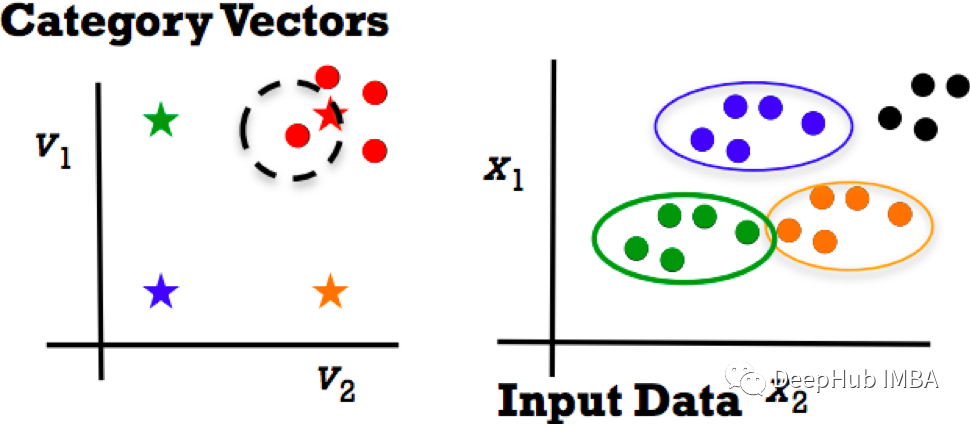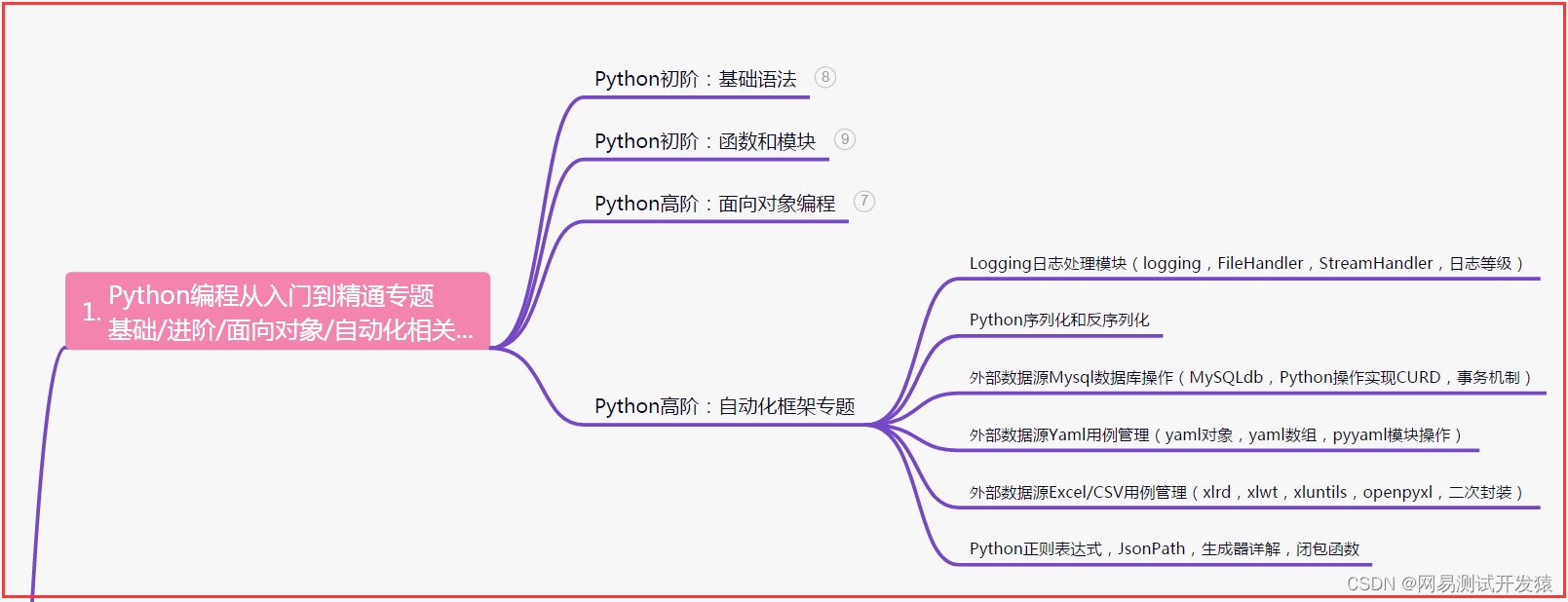当前位置:网站首页>Zero sample and small sample learning
Zero sample and small sample learning
2022-06-30 22:41:00 【deephub】
In this article , We will discuss a hot topic in different fields of machine learning and deep learning : Zero sample and small sample learning (Zero and Few Shot learning), They have different application scenarios in naturallanguageprocessing and computer vision .
Study with fewer samples
In the supervised classifier , What all models try to learn is to distinguish the characteristics of different objects , No matter what form the data exists , Such as images 、 Both video and text are the same . and · The idea of small sample learning is to learn the area classification by comparing the data , This model uses less data , And it performs better than the classical model . Support sets are often used in small sample learning (support set) Instead of training sets .
Small sample learning is a meta learning technique . Meta learning means : Learn to learn . Meta learning is a branch of metacognition , It studies the methods and cognitive processes of self-learning and learning process .
Support set
The data of support set is the same as that of training set , However, due to different learning methods, we call it support set .
K-Way N-Shot Support set : Support set has K class , It's in every class N sample .N-Shot Means the number of samples provided for each class . If each alternative has more samples , Models can be learned better .

In fewer classes , Models make it easier to classify data . in general , We can say : Less k And more n Better .
Why make it a support set ? Remember SVM Support vectors in , Namely SVM Data that distinguishes classification boundaries in , That's what support sets mean .
Similarity function
The idea of less sample learning is a similarity function . This means that SIM(X,X’), among “ SIM” Is a similarity function , and X and X’ Is the sample . The first thing to do is to learn similarity functions from large data sets . Then the similarity function is applied to predict .
Twin networks
Twin networks use positive and negative samples for classification . The following are examples of positive and negative samples :
(Tiger1,Tiger2,1)| (CAR1,CAR2,1)
(Tiger1,Car2,0)| (Tiger1,Car1,0)
This is the network structure :

The twin network first uses two images in the dataset , Then use some layers ( Here is an example of image data , Use convolution layer ), Create the input encoding vector . Finally, we try to learn the similarity function by using the difference layer and different loss functions .
The data entered into this network is :
- XA: Anchor data : Select randomly from the data set
- X+: Positive data : Same class as anchor
- X-: Negative data : Different categories of anchors
F function (CNN) Used to create encoding vectors . After the encoding vector , We can use :
D+ = || f(x^+) - f(x^a)||²
d- = || f(x^a)-f(x^ - )||²
With the edge alpha And similarity value , We can decide the type of sample .
We hope d-> =(d +) + alpha, otherwise , The loss is (d +) + alpha-(d-).
So the loss function is :max {(d +) + alpha-(d-)}
Few-Shot
The basic idea of small sample learning is to give a k-way n-shot Support set for , Train a Siamese network on a large training set . Then use the way of query to predict the category of samples .
Before training few samples to learn , First of all, we pre - train CNN Feature extraction ( Also known as embedding ), Use standards to monitor learning or Siamese Network pair CNN pretraining .
In fine tuning ,(x_j, y_j) It supports marked samples in a set .f(x_j) It's pre trained CNN Extracted feature vector .P_j = Softmax(W.f(x_j)+b) As a prediction . This can be achieved by using fine tuning W = M,b = 0., This means supporting centralized learning W and b:

Examples

consider 3-way 2-shot Support set for . Apply a neural network to each image F For feature extraction . Because each class has two images , So each class has two eigenvectors . You can get the mean value of these two vectors . Because we have 3 Category , We will have 3 An average vector . Now let's standardize them . Each vector is a representation of each class . For forecasting , We enter a query image . Get the feature vector of the query image . We will standardize it , And then I'm going to compare this vector to 3 Compare the mean vectors .

By comparison, we get our prediction classification
Single sample learning
one-shot learning It is a special case of learning with few samples , That is to learn from a sample and recognize the object again .
One way to use a single sample is to use CNN And with (n+1) Of softmax To detect whether there is a new image in the image seen by the model . But when there are not enough samples in your training data set , He doesn't work very well . And in addition to the new category, it must also be in SoftMax Use in layer (M+1) Neuron retraining model .
But we can use similar functions .
d(img1, img2) = The degree of difference between images , if d(img1, img2) <= r: identical ; if d(img1, img2) > r: Different
Zero sample learning
First , Let's see why zero sample learning is important . We are facing a large and growing number of categories . It is difficult to collect and annotate instances . And new categories are emerging .
Zero sample learning is what human beings can do , But classical machine learning cannot . For example, cross language dictionary induction ( Every pair of languages , Each word is a category ).
Pattern recognition from supervised to zero samples
Our previous practice in the classic classification model is like this :

But when new categories appear , How do you do that ? The key is zero sample learning . The main idea of zero sample learning is to embed categories into vectors .

Feature category vector mapping :v = f(x)
If a new category appears , We can get its new class vector embedding , Then use the nearest neighbor and treat these vectors as labels . Data category vector graph can be extended to new categories . It means that we are learning from our past experience .
How zero sample learning works ?
In return / In the training steps of classification method , We will get some known classes - Category vector v And data x. What we want to learn is data attributes v=f(x). For example, using support vector machines (SVM).
In the test phase , We want to specify a vector for the new class v*. And then use f(x*) To find a new category . This method is simple and fast , And it also has the separability of categories .
In zero sample learning , Use energy Function to determine whether the category matches . set up x Is the data ,v Is a category vector . In the training phase , We train energy function E(x,v)=x 'Wv( This is called bilinear embedding of the return scalar ).
Data and task match (x=v) when E_w(x,v) It's going to get big , When the data does not match the task (x!=v),E_w(x,b) Very small . The goal of training is to maximize the edge spacing of this function .
And in the testing phase :
Classify new class instances x*, Specify v The vector computes each v Of E(x*, v*), Find the category with the largest margin , Maximum marginal separability means higher accuracy , But it is different from the classical machine learning model , It is complex and slow .
Where to get the category vector ?
“ supervise ” source :(1) Manual annotation of class attributes ,(2) Classification class level vector coding
“ Unsupervised ” source : Existing unstructured data (Word2Vec That's one example )
Some problems of zero sample learning
1、 Zero sample learning needs to be retrained in domain transfer / test

2、 Multi label zero-shot
Sometimes we want multi label classification , Instead of single label classification , This is dealing with classification vectors will be very troublesome , Then you can add every possible combination vector , for example : Trees , Trees + mountain , Trees + The beach ,…, But this has actually resulted in a doubling of the actual number of categories .
3、 Deep network can carry out zero sample learning

Taking many classical and latest transfer learning algorithms as special cases, it is still impossible to verify whether they are beneficial
The progress and application of zero sample learning at present
1、 Use it for audio recognition | UAV vision vector => Context vector , Generalize any new context through context vector, such as in UAV vision , Covariate context vector : distance 、 pitch 、 Speed 、 Rolling 、 Yaw, etc
2、 Cross language dictionary induction : Find the corresponding words in different languages
summary
Zero sample and small sample learning methods reduce the dependence on annotated data . So they are important for new areas and difficult areas of data collection . Few samples (Few-Shot Learning FSL) It's a machine learning problem ( from E, T and P Appoint ), among E Only a limited number of examples are included , With supervision information . The existing FSL The problem is mainly about supervising learning . Zero sample learning (Zero-shot learning, ZSL) It is a problem solution in machine learning , Learners observe samples from classes that are not observed in training during the test , And predict the class they belong to .
https://avoid.overfit.cn/post/129aa457af7b4dff9fa33dcaf0015968
author :Amirhossein Abaskohi
边栏推荐
- MIT doctoral dissertation optimization theory and machine learning practice
- 将Nagios监控信息存入MySQL
- d编译时计数
- latex左侧大括号 latex中大括号多行公式
- [无线通信基础-13]:图解移动通信技术与应用发展-1-概述
- 100 important knowledge points that SQL must master: creating and manipulating tables
- msf之ms17-010永恒之蓝漏洞
- 机器学习编译入门课程学习笔记第二讲 张量程序抽象
- 深入解析 Apache BookKeeper 系列:第四篇—背压
- Nansen double disk encryption giant self rescue: how to prevent the collapse of billions of dominoes
猜你喜欢

Esp8266 becomes client and server

msf之ms17-010永恒之蓝漏洞

Doker的容器数据卷

latex左侧大括号 latex中大括号多行公式

KubeVela 1.4:让应用交付更安全、上手更简单、过程更透明

A new one from Ali 25K came to the Department, which showed me what the ceiling is

MIT博士论文 | 优化理论与机器学习实践

Introduction to machine learning compilation course learning notes lesson 2 tensor program abstraction

Redis - 01 cache: how to use read cache to improve system performance?

Ten of the most heart piercing tests / programmer jokes, read the vast crowd, how to find?
随机推荐
A new one from Ali 25K came to the Department, which showed me what the ceiling is
How to realize the center progress bar in wechat applet
Based on the open source stream batch integrated data synchronization engine Chunjun data restore DDL parsing module actual combat sharing
[career planning for Digital IC graduates] Chap.1 overview of IC industry chain and summary of representative enterprises
[fundamentals of wireless communication-13]: illustrated mobile communication technology and application development-1-overview
How to use filters in jfinal to monitor Druid for SQL execution?
Architecture of IM integrated messaging system sharing 100000 TPS
「团队训练赛」ShanDong Multi-University Training #3
Technical principle of decentralized exchange system development - digital currency decentralized exchange system development (illustrative case)
Doker的容器数据卷
Yolo target detection
What is the experience of pairing with AI? Pilot vs alphacode, Codex, gpt-3
Femas: cloud native multi runtime microservice framework
部门新来了个阿里25K出来的,让我见识到了什么是天花板
What are database OLAP and OLTP? Same and different? Applicable scenarios
去中心化交易所系统开发技术原理丨数字货币去中心化交易所系统开发(说明案例)
Neo4j load CSV configuration and use
将Nagios监控信息存入MySQL
How does win11 optimize services? Win11 method of optimizing service
During telecommuting, the project team punched in the wechat group | solicited papers from the community